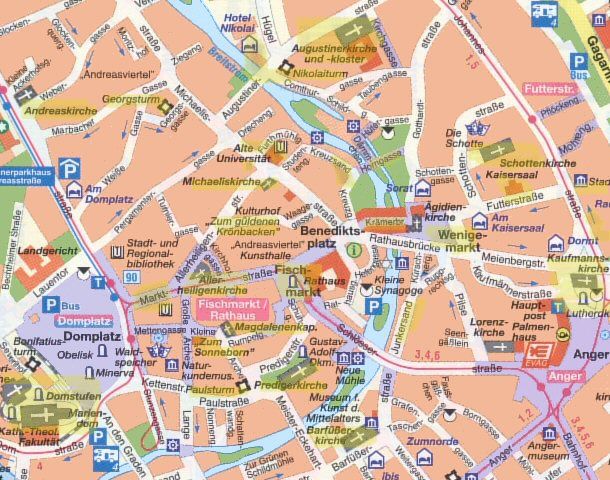
In Erfurt we visit many carefully restored Renaissance and half-timbered houses which, together with other buildings and the famous Krämerbrücke, form one of the best-preserved medieval city centres in Germany. Once 36 parish churches, chapels and 15 monasteries and convents gave the city the nicknames "Thuringian Rome" and "Erfordia turrita" (tower-crowned Erfurt). For centuries, Erfurt's silhouette has been defined by the ensemble of two mighty sacred buildings: St. Mary's Cathedral and the Church of St. Severi.
Erfurt is criss-crossed by small rivers such as the Gera, the Bergstrom and the Walkstrom. Our hotel was located directly on the Gera near the Nikolai Tower.
Almost all the sights in Erfurt's old town are documented with pictures (yellow markings). Just move the mouse over the map. In some cases a click leads to further pictures - see also navigation bar on the left.

Erfurt, the Thuringian state metropolis, was founded by Bonifacius in 742 and grew into a powerful trading and university city at the intersection of ancient trade routes in the Middle Ages. Its cultural life attracted great personalities such as Luther (Augustinian monastery), Adam Ries, Goethe, Schiller, Herder, Wieland, Humboldt, Czar Alexander and Napoléon to Erfurt. Johann Sebastian Bach's parents were married in the Kaufmannskirche.